19 results
Chapter 6 - Periodicals, Popular Fiction, and the Affordances of Digital Collections
-
-
- Book:
- Nineteenth-Century Literature in Transition: The 1860s
- Published online:
- 01 February 2024
- Print publication:
- 08 February 2024, pp 111-128
-
- Chapter
- Export citation
Chapter 13 - Gothic Horror Fiction
- from Part II - The Politics of Genre and Form
-
-
- Book:
- The Cambridge Companion to the Twentieth-Century American Novel and Politics
- Published online:
- 07 October 2023
- Print publication:
- 12 October 2023, pp 205-218
-
- Chapter
- Export citation
Chapter 12 - Rather Unpleasant Stories
- from Part III - Revolutions and Empires
-
-
- Book:
- The Nation in British Literature and Culture
- Published online:
- 20 July 2023
- Print publication:
- 10 August 2023, pp 207-224
-
- Chapter
- Export citation
15 - Race, Romance and Anxiety
-
-
- Book:
- The Cambridge History of the Australian Novel
- Published online:
- 28 June 2023
- Print publication:
- 27 July 2023, pp 254-271
-
- Chapter
- Export citation
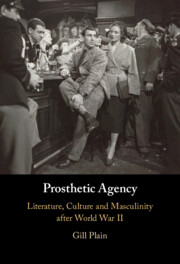
Prosthetic Agency
- Literature, Culture and Masculinity after World War II
-
- Published online:
- 29 June 2023
- Print publication:
- 13 July 2023
Conclusion
-
- Book:
- Writing, Politics and Change in South Africa after Apartheid
- Published online:
- 08 August 2023
- Print publication:
- 08 June 2023, pp 203-208
-
- Chapter
- Export citation
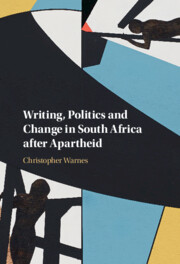
Writing, Politics and Change in South Africa after Apartheid
-
- Published online:
- 08 August 2023
- Print publication:
- 08 June 2023
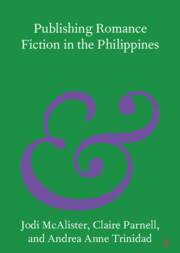
Publishing Romance Fiction in the Philippines
-
- Published online:
- 18 May 2023
- Print publication:
- 08 June 2023
-
- Element
- Export citation
Chapter 1 - What Is World Crime Fiction?
-
-
- Book:
- The Cambridge Companion to World Crime Fiction
- Published online:
- 14 April 2022
- Print publication:
- 21 April 2022, pp 1-24
-
- Chapter
- Export citation
Chapter 20 - ‘Freudian Fiction’ or ‘“Wild” Psycho-Analysis’?
- from Part IV - Society
-
-
- Book:
- British Literature in Transition, 1900–1920: A New Age?
- Published online:
- 07 December 2021
- Print publication:
- 02 December 2021, pp 365-380
-
- Chapter
- Export citation
Chapter 10 - Margaret Atwood’s Later Short Fiction
-
-
- Book:
- The Cambridge Companion to Margaret Atwood
- Published online:
- 19 March 2021
- Print publication:
- 01 April 2021, pp 157-170
-
- Chapter
- Export citation
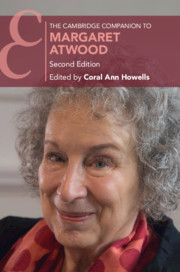
The Cambridge Companion to Margaret Atwood
-
- Published online:
- 19 March 2021
- Print publication:
- 01 April 2021
Introduction
-
- Book:
- Children's Literature and the Rise of ‘Mind Cure'
- Published online:
- 10 December 2020
- Print publication:
- 17 December 2020, pp 1-23
-
- Chapter
- Export citation
Chapter 19 - The Empty Cities of Urban Apocalypse
- from Part III - Varieties of Apocalyptic Experience
-
-
- Book:
- Apocalypse in American Literature and Culture
- Published online:
- 03 December 2020
- Print publication:
- 17 December 2020, pp 252-267
-
- Chapter
- Export citation
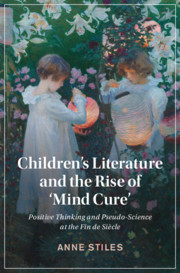
Children's Literature and the Rise of ‘Mind Cure'
- Positive Thinking and Pseudo-Science at the Fin de Siècle
-
- Published online:
- 10 December 2020
- Print publication:
- 17 December 2020
36 - Frontline Fictions
- from (II) - Framing New Visions
-
-
- Book:
- The Cambridge History of Black and Asian British Writing
- Published online:
- 19 December 2019
- Print publication:
- 16 January 2020, pp 598-619
-
- Chapter
- Export citation
Chapter 21 - The Gothic Tradition in New Orleans
-
-
- Book:
- New Orleans
- Published online:
- 23 August 2019
- Print publication:
- 05 September 2019, pp 278-291
-
- Chapter
- Export citation
Part XXIV - Shakespeare and the Book
-
-
- Book:
- The Cambridge Guide to the Worlds of Shakespeare
- Published online:
- 17 August 2019
- Print publication:
- 21 January 2016, pp 1661-1728
-
- Chapter
- Export citation
241 - Shakespeare into Fiction
- from Part XXIV - Shakespeare and the Book
-
-
- Book:
- The Cambridge Guide to the Worlds of Shakespeare
- Published online:
- 17 August 2019
- Print publication:
- 21 January 2016, pp 1707-1715
-
- Chapter
- Export citation



